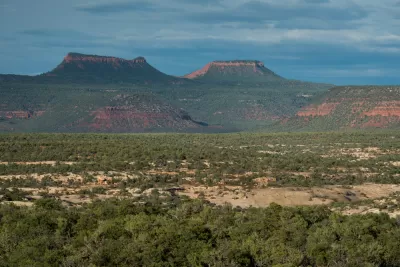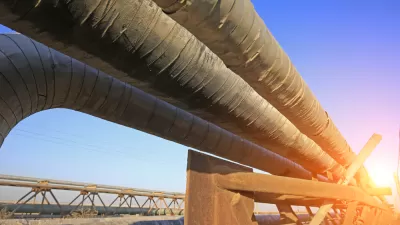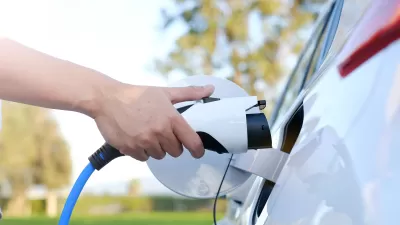Critics of the Trump administration who chide the president for a lack of accomplishments should check the environmental record.

Nadja Popovich, Livia Albeck-Ripka, and Kendra Pierre-Louis share the findings of a recent New York Times analysis, based on research from Harvard Law School, Columbia Law School, and other sources, into the program of environmental deregulation undertaken by the Trump administration during nearly four years in office.
The analysis "counts more than 70 environmental rules and regulations officially reversed, revoked or otherwise rolled back under Mr. Trump," according to the article. "Another 26 rollbacks are still in progress."
The findings of the study corroborate another recent report on the environmental impacts of the Trump administration's policy rollbacks published by the Rhodium Group in September. That report quantified the environmental damage of the Trump administration's policies in metric tons of carbon dioxide—1.8 billion metric tons to be exact.
This latest analysis offers insight into where the Trump administration has achieved the most deregulation, pointing specifically to the U.S. Environmental Protection Agency and the U.S. Department of the Interior.
After including a caveat about the tenuous legal standing of many of the policies implemented by the Trump administration, the article includes a summary of each of the rules targeted for reversal by the Trump administration, organized into the categories of 1) air pollution and emissions, 2) drilling and extraction, 3) infrastructure and planning, 4) animals, 5) water pollution, 6) toxic substances and safety, and 7) other.
In the planning category, the article lists multiple changes pertaining to the National Environmental Policy Act and a decision to rescind the Bureau of Land Management's "Planning 2.0" rule, among other examples.
FULL STORY: The Trump Administration Is Reversing Nearly 100 Environmental Rules. Here’s the Full List.

Alabama: Trump Terminates Settlements for Black Communities Harmed By Raw Sewage
Trump deemed the landmark civil rights agreement “illegal DEI and environmental justice policy.”

Planetizen Federal Action Tracker
A weekly monitor of how Trump’s orders and actions are impacting planners and planning in America.

Why Should We Subsidize Public Transportation?
Many public transit agencies face financial stress due to rising costs, declining fare revenue, and declining subsidies. Transit advocates must provide a strong business case for increasing public transit funding.

Understanding Road Diets
An explainer from Momentum highlights the advantages of reducing vehicle lanes in favor of more bike, transit, and pedestrian infrastructure.

New California Law Regulates Warehouse Pollution
A new law tightens building and emissions regulations for large distribution warehouses to mitigate air pollution and traffic in surrounding communities.

Phoenix Announces Opening Date for Light Rail Extension
The South Central extension will connect South Phoenix to downtown and other major hubs starting on June 7.
Urban Design for Planners 1: Software Tools
This six-course series explores essential urban design concepts using open source software and equips planners with the tools they need to participate fully in the urban design process.
Planning for Universal Design
Learn the tools for implementing Universal Design in planning regulations.
Caltrans
Smith Gee Studio
Institute for Housing and Urban Development Studies (IHS)
City of Grandview
Harvard GSD Executive Education
Toledo-Lucas County Plan Commissions
Salt Lake City
NYU Wagner Graduate School of Public Service





























